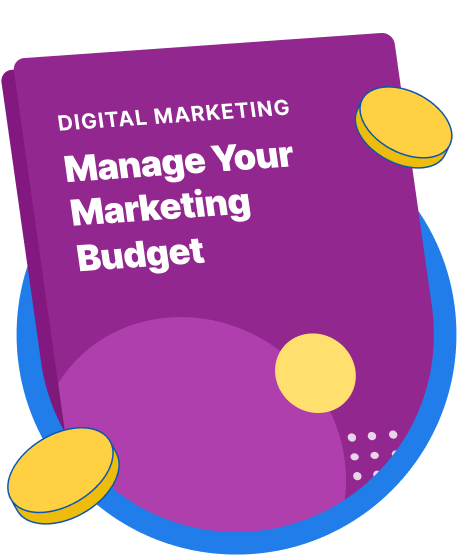-
 7 min. read
7 min. read
-
 Kyle Pauling
Kyle Pauling Content Writer
Content Writer
- Kyle Pauling is an Internet Marketing Specialist with a focus in SEO & PPC. Outside of digital marketing, he is a fly tying and fly fishing enthusiast who enjoys spending his time on the water.
What if you could create better, smarter advertisements — without investing a ton of time? With Google’s responsive search ads, you can, thanks to advanced machine learning technology that delivers the best-performing ad to your target audience. As one of the most revolutionary updates to Google Ads, responsive search ads are the next evolution in pay-per-click (PPC) advertising with Google.
Keep reading to learn more about this game-changing advertising option!
We foster and form long-term partnerships so that your business has long-term results.
Over 90% of WebFX clients continue partnering with us into year 2 of their campaign.
Hear from Our Happy Customers

What is a Google responsive search ad?
Responsive ads are the newest addition to Google Ads, Google’s advertising platform. These ads adapt to your audience so that your ad shows the most relevant message to your customers.
Create multiple headlines and descriptions for your ad and Google automatically tests different combinations. You can even create responsive display ads.  Over time, the machine learning algorithm behind responsive search ads determines which combinations perform the best for your audience.
Over time, the machine learning algorithm behind responsive search ads determines which combinations perform the best for your audience.
Google then serves this ad to users, depending on several factors, including their search terms, device, and more. A quick definition of responsive search ads? They’re the next iteration of A/B testing.
Five things to know about responsive search ads
What should marketers and business owners know about responsive search ads?
If you’re interested in bringing responsive search ads into your PPC campaigns, there are five critical factors to remember about these search ads.
1. Headline and description options
Responsive search ads allow for up to 15 different headlines and four different descriptions for one ad. Google selects up to three headlines and up to two descriptions to use in an ad. Unlike traditional search ads, Google can rearrange these headlines and descriptions to create more than 43,000 variations instead of a single static ad.
 When creating a new responsive search ad, Google requires a minimum of three headlines and two description line variations — you don’t have to create 15 headlines and four descriptions, but it’s worth brainstorming that many. With more headline and description options, you can test which ad variations perform the best. You can also identify ads that need revising, which strengthens your PPC campaign.
When creating a new responsive search ad, Google requires a minimum of three headlines and two description line variations — you don’t have to create 15 headlines and four descriptions, but it’s worth brainstorming that many. With more headline and description options, you can test which ad variations perform the best. You can also identify ads that need revising, which strengthens your PPC campaign.
That can lead to a lower cost-per-click (CPC) and a higher conversion rate.
Check out “Top 5 Benefits of Pinning Headlines in Google Advertising in 2022 (+ Best Practices)” to learn more about headlines in responsive ads and how they can improve your campaigns.
2. Reporting on responsive search ads
Analyzing the performance of responsive search ads is an essential element in understanding and improving a PPC campaign. Evaluating the data behind this type of ad is critical. It helps you determine if the ads are a success, given the industry, product or service, and audience.
To view the performance data of Google’s responsive ads, follow these steps:
- Navigate to “Ads & extensions” in Google Ads
- Add an Ad type filter for “Responsive search ad”
- View the data, which includes impressions, click-through rates, average CPC, cost, and more
For newly created ads, there won’t be any historical data to evaluate performance. That’s why it’s helpful to compare the performance of new responsive ads against other types of ads. For example, one comparison that could provide insights is responsive ads versus expanded text ads to show the impact of switching headlines and descriptions.
With real data, your team can not only improve your PPC campaign but also accomplish your goals.
3. Pinning ad headlines and descriptions
In responsive search ads, there is an option to pin headlines and descriptions in a set position. This option is helpful if there is something that needs to appear in every ad, such as a time-sensitive call-to-action (CTA) or a brand name. For example, you could have these three headlines:
- Store Widgets
- Lifetime Warranty
- Free Shipping Over $99
The headline appears as, “Store Widgets | Lifetime Warranty | Free Shipping Over $99.”  If you want your free shipping headline to appear second, versus third, you can pin it. That way, it displays in the second position every time. From one perspective, you can look at pinned headlines and descriptions as a static element of your ad.
If you want your free shipping headline to appear second, versus third, you can pin it. That way, it displays in the second position every time. From one perspective, you can look at pinned headlines and descriptions as a static element of your ad.
They always remain the same. Pin multiple headlines or descriptions to a position, and you can add flexibility for that given position.
4. Ad strength indicator
For some time now, Google’s promoted the idea of having more than two ads per ad group. They’ve advised that a well-structured ad group should also contain diverse ads. Diverse ads expose your messages to a higher number of searches.
With more ads available for more auctions, Google could serve your most relevant ad to users looking for quick and easy answers. What is ad strength, though? Ad strength measures:
- How diverse an ad’s copy is from other ads in the ad group
- How relevant an ad’s copy is to the keywords in that ad group.
The ad strength of a responsive search ad can vary from “Poor” to “Excellent.” Within the ad creation interface, Google provides actionable ideas on how to improve the ad strength, such as by adding more headlines or creating unique and original headlines. With the ad strength indicator, Google helps you create and launch compelling and original ads. It also ensures your ads vary, which provides your team with better insight into why an ad performs better than another.
5. Mobile and desktop displays
With more than 50 percent of PPC ad clicks coming from mobile devices, Google developed its responsive search ads to perform on both mobile and desktop devices. That’s why these ads adapt to the user’s screen size.  While all the components of your ad won’t display on mobile devices — since there’s less screen real estate — Google ensures that responsive search ads always display with at least two headlines and one description, which allows you to test for ad performance automatically.
While all the components of your ad won’t display on mobile devices — since there’s less screen real estate — Google ensures that responsive search ads always display with at least two headlines and one description, which allows you to test for ad performance automatically.
Here are five a/b testing ideas for responsive search ads to help you get started.
Benefits of Google responsive search ads
With responsive search ads, there are a ton of benefits, including:
- Flexible: One significant advantage is that the ads are flexible. With traditional search ads, a search query can trigger a static ad that is slightly off-base and irrelevant given the searcher’s intent. With responsive search ads, Google’s machine learning adjusts to what works for a given audience and what they want to serve the most relevant ad.
- Targeted: Through machine learning, Google targets users according to their intent and past behavioral data. Without responsive ads, you would lose that valuable behavioral data of an audience, and only a user’s search query would determine which ad they see.
- Automated: Before responsive search ads, advertisers created variations of an ad and used manual A/B testing to determine what worked best. With this new type of ad, that manual process gets automated, which saves time and improves an ad group’s performance.
- Expansive: Another benefit of responsive search ads is that you have more space for your message. Add more keywords or CTAs in the additional headline or description lines to create a more compelling message for your audience.
- Versatile: A responsive type ad displays your ad in front of more people. Swapping out headlines and description lines allows an ad to compete in multiple auctions and match various search queries. In comparison, a traditional text ad only displays when triggered by a smaller set of search queries.
Improved ad performance is the motivation behind all the elements of responsive search ads, from creating additional headlines to pinning descriptions. By serving the most relevant message, Google has launched a powerful new tool that revolutionizes how PPC advertising works.
Our digital marketing campaigns impact the metrics that improve your bottom line.
See More Results
WebFX has driven the following results for clients:
$6 billion
In client revenue
24 million
Leads for our clients
7.14 million
Client phone calls
Learn more about Google’s advertising options!
Want to learn more about how you can advertise on Google — and increase your company’s revenue? Subscribe to our newsletter at the top to stay up-to-date on the latest trends, strategies, and insights in digital marketing.
-
 Kyle Pauling is an Internet Marketing Specialist with a focus in SEO & PPC. Outside of digital marketing, he is a fly tying and fly fishing enthusiast who enjoys spending his time on the water.
Kyle Pauling is an Internet Marketing Specialist with a focus in SEO & PPC. Outside of digital marketing, he is a fly tying and fly fishing enthusiast who enjoys spending his time on the water. -

WebFX is a full-service marketing agency with 1,100+ client reviews and a 4.9-star rating on Clutch! Find out how our expert team and revenue-accelerating tech can drive results for you! Learn more
Try our free Marketing Calculator
Craft a tailored online marketing strategy! Utilize our free Internet marketing calculator for a custom plan based on your location, reach, timeframe, and budget.
Plan Your Marketing Budget

Maximize Your Marketing ROI
Claim your free eBook packed with proven strategies to boost your marketing efforts.
Get the GuideTry our free Marketing Calculator
Craft a tailored online marketing strategy! Utilize our free Internet marketing calculator for a custom plan based on your location, reach, timeframe, and budget.
Plan Your Marketing Budget





